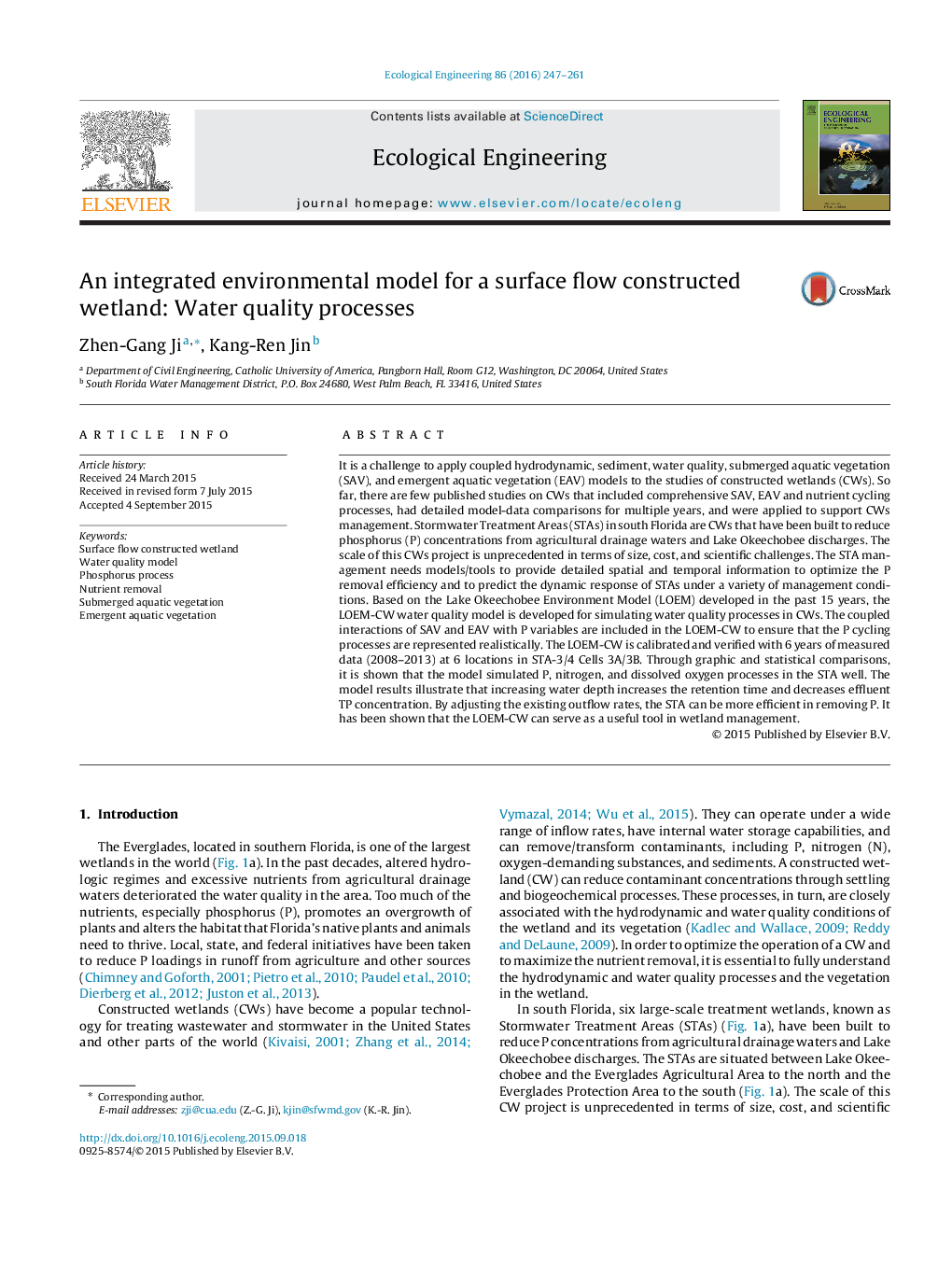| کد مقاله | کد نشریه | سال انتشار | مقاله انگلیسی | نسخه تمام متن |
|---|---|---|---|---|
| 4388936 | 1618013 | 2016 | 15 صفحه PDF | دانلود رایگان |
• A comprehensive water quality model is developed for constructed wetlands.
• Nutrient cycles, sediment diagenesis, SAV, and EAV are represented in detail.
• The model is calibrated and verified with 6 years of measured data at 6 locations.
• The model is applied to support STA operation and management.
It is a challenge to apply coupled hydrodynamic, sediment, water quality, submerged aquatic vegetation (SAV), and emergent aquatic vegetation (EAV) models to the studies of constructed wetlands (CWs). So far, there are few published studies on CWs that included comprehensive SAV, EAV and nutrient cycling processes, had detailed model-data comparisons for multiple years, and were applied to support CWs management. Stormwater Treatment Areas (STAs) in south Florida are CWs that have been built to reduce phosphorus (P) concentrations from agricultural drainage waters and Lake Okeechobee discharges. The scale of this CWs project is unprecedented in terms of size, cost, and scientific challenges. The STA management needs models/tools to provide detailed spatial and temporal information to optimize the P removal efficiency and to predict the dynamic response of STAs under a variety of management conditions. Based on the Lake Okeechobee Environment Model (LOEM) developed in the past 15 years, the LOEM-CW water quality model is developed for simulating water quality processes in CWs. The coupled interactions of SAV and EAV with P variables are included in the LOEM-CW to ensure that the P cycling processes are represented realistically. The LOEM-CW is calibrated and verified with 6 years of measured data (2008–2013) at 6 locations in STA-3/4 Cells 3A/3B. Through graphic and statistical comparisons, it is shown that the model simulated P, nitrogen, and dissolved oxygen processes in the STA well. The model results illustrate that increasing water depth increases the retention time and decreases effluent TP concentration. By adjusting the existing outflow rates, the STA can be more efficient in removing P. It has been shown that the LOEM-CW can serve as a useful tool in wetland management.
Journal: Ecological Engineering - Volume 86, January 2016, Pages 247–261
